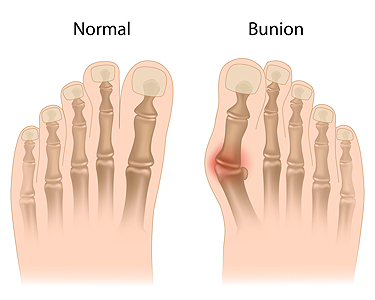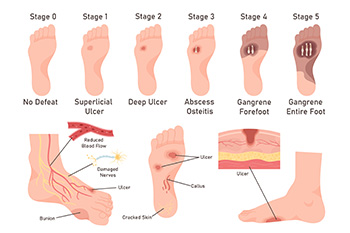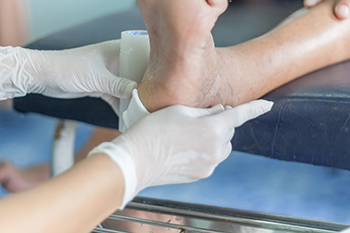Connect With Us
Blog
 A campaign launched by the Salvation Army earlier this season aimed to keep children’s feet warm and dry this winter. The campaign, Boots for Yoops, collected boots, shoes, and socks for various children in need. Leonita Schweigert, the campaign’s creator, shared, “I decided instead of duplicating services and doing Coats for Kids like everybody does, that there are so many kids without proper shoes. To determine who exactly is in need of winter shoes, Schweigert contacted local schools to obtain names and sizes of children in need. New shoes and boots are being requested as to avoid potential health issues, such as Athlete’s foot. The campaign finished its run at the end of February.
A campaign launched by the Salvation Army earlier this season aimed to keep children’s feet warm and dry this winter. The campaign, Boots for Yoops, collected boots, shoes, and socks for various children in need. Leonita Schweigert, the campaign’s creator, shared, “I decided instead of duplicating services and doing Coats for Kids like everybody does, that there are so many kids without proper shoes. To determine who exactly is in need of winter shoes, Schweigert contacted local schools to obtain names and sizes of children in need. New shoes and boots are being requested as to avoid potential health issues, such as Athlete’s foot. The campaign finished its run at the end of February.
Making sure that your children maintain good foot health is very important as they grow. If you have any questions, contact one of our podiatrists of Save Your Soles. our doctors can provide the care you need to keep you pain-free and on your feet.
Keeping Children's Feet Healthy
Having healthy feet during childhood can help prevent medical problems later in life, namely in the back and legs. As children grow, their feet require different types of care. Here are some things to consider...
Although babies do not walk yet, it is still very important to take care of their feet.
Avoid putting tight shoes or socks on his or her feet.
Allow the baby to stretch and kick his or her feet to feel comfortable.
As a toddler, kids are now on the move and begin to develop differently. At this age, toddlers are getting a feel for walking, so don’t be alarmed if your toddler is unsteady or ‘walks funny’.
As your child gets older, it is important to teach them how to take care of their feet.
Show them proper hygiene to prevent infections such as fungus.
Be watchful for any pain or injury.
Have all injuries checked by a doctor as soon as possible.
Comfortable, protective shoes should always be worn, especially at play.
If you have any questions, please feel free to contact our offices located in Abington and Willow Grove, PA . We offer the newest diagnostic and treatment technologies for all your foot care needs.
 A noticeable bony bump on the bottom of the big toe may indicate a bunion has developed. If it forms on the pinky toe, it is referred to as a bunionette. A bunion may cause some patients to purchase larger shoes, and it may help to wear a protective covering over it. This ailment is mostly likely caused by wearing shoes that do not have ample room for the toes to move freely in. Additionally, patients who have a genetic history of bunions may be prone to developing them. Mild relief may be found when specific exercises and stretches are frequently performed, and this may help to strengthen the surrounding muscles. Patients whose daily life is negatively affected by bunions are strongly suggested to confer with a podiatrist who can recommend the best treatment methods, which may include surgery for permanent removal.
A noticeable bony bump on the bottom of the big toe may indicate a bunion has developed. If it forms on the pinky toe, it is referred to as a bunionette. A bunion may cause some patients to purchase larger shoes, and it may help to wear a protective covering over it. This ailment is mostly likely caused by wearing shoes that do not have ample room for the toes to move freely in. Additionally, patients who have a genetic history of bunions may be prone to developing them. Mild relief may be found when specific exercises and stretches are frequently performed, and this may help to strengthen the surrounding muscles. Patients whose daily life is negatively affected by bunions are strongly suggested to confer with a podiatrist who can recommend the best treatment methods, which may include surgery for permanent removal.
If you are suffering from bunions, contact one of our podiatrists of Save Your Soles. our doctors can provide the care you need to keep you pain-free and on your feet.
What Is a Bunion?
A bunion is formed of swollen tissue or an enlargement of boney growth, usually located at the base joint of the toe that connects to the foot. The swelling occurs due to the bones in the big toe shifting inward, which impacts the other toes of the foot. This causes the area around the base of the big toe to become inflamed and painful.
Why Do Bunions Form?
Genetics – Susceptibility to bunions are often hereditary
Stress on the feet – Poorly fitted and uncomfortable footwear that places stress on feet, such as heels, can worsen existing bunions
How Are Bunions Diagnosed?
Doctors often perform two tests – blood tests and x-rays – when trying to diagnose bunions, especially in the early stages of development. Blood tests help determine if the foot pain is being caused by something else, such as arthritis, while x-rays provide a clear picture of your bone structure to your doctor.
How Are Bunions Treated?
- Refrain from wearing heels or similar shoes that cause discomfort
- Select wider shoes that can provide more comfort and reduce pain
- Anti-inflammatory and pain management drugs
- Orthotics or foot inserts
- Surgery
If you have any questions, please feel free to contact our offices located in Abington and Willow Grove, PA . We offer the newest diagnostic and treatment technologies for all your foot care needs.

Ulcers of the foot are a common yet preventable concern for people with diabetes. When circulation is reduced and sensation is diminished, even a small blister or cut can turn into a larger problem. The key to prevention lies in daily habits that protect and preserve skin integrity. Washing and drying the feet thoroughly, moisturizing to prevent cracking, and inspecting the toes, soles, and heels each day can make a difference. Choosing shoes that fit well and avoiding barefoot walking also helps to reduce risk. Nail trimming should be done carefully to avoid injury, and any signs of redness or swelling should be addressed early. Routine checkups with a podiatrist are an important layer of protection, since problems may not always be obvious. If you are living with diabetes, it is suggested that you visit a podiatrist regularly to lower your risk of developing foot ulcers.
Diabetic foot care is important in preventing foot ailments such as ulcers. If you are suffering from diabetes or have any other concerns about your feet, contact one of our podiatrists from Save Your Soles. our doctors can provide the care you need to keep you pain-free and on your feet.
Diabetic Foot Care
Diabetes affects millions of people every year. The condition can damage blood vessels in many parts of the body, especially the feet. Because of this, taking care of your feet is essential if you have diabetes, and having a podiatrist help monitor your foot health is highly recommended.
The Importance of Caring for Your Feet
- Routinely inspect your feet for bruises or sores.
- Wear socks that fit your feet comfortably.
- Wear comfortable shoes that provide adequate support.
Patients with diabetes should have their doctor monitor their blood levels, as blood sugar levels play such a huge role in diabetic care. Monitoring these levels on a regular basis is highly advised.
It is always best to inform your healthcare professional of any concerns you may have regarding your feet, especially for diabetic patients. Early treatment and routine foot examinations are keys to maintaining proper health, especially because severe complications can arise if proper treatment is not applied.
If you have any questions, please feel free to contact our offices located in Abington and Willow Grove, PA . We offer the newest diagnostic and treatment technologies for all your foot care needs.

A wound of the foot is an open sore or injury that can result from trauma, pressure, poor circulation, or underlying medical conditions. These wounds can be slow to heal and may lead to serious complications, if not properly managed. Off-loading practices are essential for recovery as they relieve pressure from the affected area, allowing tissues to heal and reducing the risk of infection or further damage. Techniques include wearing specialized footwear, padding, casts, or orthotic devices. A podiatrist can evaluate the wound, create a personalized off-loading plan, and provide advanced treatments for faster healing. If you have a foot wound, it is strongly suggested that you promptly schedule an appointment with a podiatrist who can effectively treat this potentially serious condition.
Wound care is an important part in dealing with diabetes. If you have diabetes and a foot wound or would like more information about wound care for diabetics, consult with one of our podiatrists from Save Your Soles. our doctors will assess your condition and provide you with quality foot and ankle treatment.
What Is Wound Care?
Wound care is the practice of taking proper care of a wound. This can range from the smallest to the largest of wounds. While everyone can benefit from proper wound care, it is much more important for diabetics. Diabetics often suffer from poor blood circulation which causes wounds to heal much slower than they would in a non-diabetic.
What Is the Importance of Wound Care?
While it may not seem apparent with small ulcers on the foot, for diabetics, any size ulcer can become infected. Diabetics often also suffer from neuropathy, or nerve loss. This means they might not even feel when they have an ulcer on their foot. If the wound becomes severely infected, amputation may be necessary. Therefore, it is of the upmost importance to properly care for any and all foot wounds.
How to Care for Wounds
The best way to care for foot wounds is to prevent them. For diabetics, this means daily inspections of the feet for any signs of abnormalities or ulcers. It is also recommended to see a podiatrist several times a year for a foot inspection. If you do have an ulcer, run the wound under water to clear dirt from the wound; then apply antibiotic ointment to the wound and cover with a bandage. Bandages should be changed daily and keeping pressure off the wound is smart. It is advised to see a podiatrist, who can keep an eye on it.
If you have any questions please contact our offices located in Abington and Willow Grove, PA . We offer the newest diagnostic and treatment technologies for all your foot and ankle needs.
